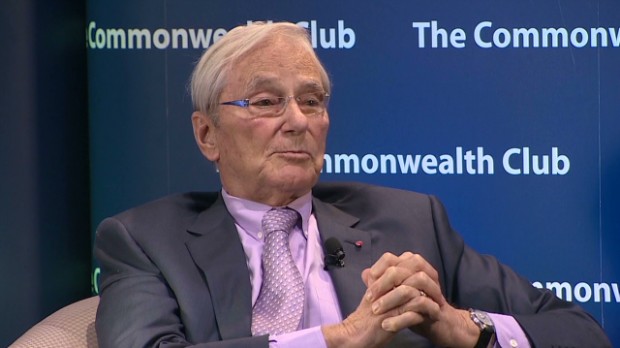
Streaming speeds for Verizon FiOS customers dropped by 14% between December and January, according to Netflix
NEW YORK (CNNMoney) Having trouble streaming "House of Cards?" A stand-off involving Verizon and Netflix may be to blame.Streaming speeds for Verizon FiOS customers dropped by 14% between December and January, according to Netflix. Meanwhile, Netflix speeds on most other Internet service providers held steady during that time period.
The slowdown comes amid a stand-off reported this week by The Wall Street Journal over whether broadband providers like Verizon (VZ, Fortune 500) and AT&T (T, Fortune 500) will charge Netflix to carry its videos.
Netflix (NFLX) relies heavily on third parties -- primarily Cogent Communications (CCOI) -- to deliver content from its servers to Internet service providers. Traditionally, broadband companies and bandwidth providers like Cogent haven't charged one another, on the assumption that traffic that flows back and forth over their networks will even out over time.
But recently, broadband companies have begun demanding payment when they feel they're being overburdened in the exchange.
 How the Comcast-TWC deal will hit your TV
How the Comcast-TWC deal will hit your TV Verizon (VZ, Fortune 500) wants Netflix to pay for the enormous amounts of traffic that get sent over its FiOS network, the Journal reported. Netflix is a data hog, its streaming content sometimes making up around a third of traffic on U.S. broadband networks during peak hours.
Cogent CEO Dave Schaeffer said Verizon was "using their monopoly power to put a toll road in place."
"They're refusing to improve the connections between our network and their network," he told CNNMoney.
A Netflix spokesman declined to comment, but the company in the past has characterized the slowdown in Verizon's streaming speeds as a consequence of network congestion.
Verizon spokeswoman Linda Laughlin denied that there was any conflict with Netflix.
"Verizon continues to be open to ideas about the best ways to alleviate congestion so all customers benefit from the best quality of service possible," she said. "Verizon treats all traffic equally."
The broadband ind! ustry has been in the spotlight in recent weeks over concerns about consolidation and net neutrality, the principle that Internet service providers should avoid discriminating among various kinds of online traffic.
A federal appeals court stuck down the Federal Communication Commission's net neutrality rules last month, though the ruling did affirm the FCC's authority in principle to regulate broadband Internet service.
The FCC said Wednesday that it planned to issue new rules "to preserve Internet freedom and openness" under a legal framework that will better stand up to scrutiny in the courts. Net neutrality advocates are hopeful that the new rules will prevent broadband providers from restricting access to certain sites or imposing fees for certain web content.
Concerns about potential abuses in the industry gained additional urgency last week following news that Comcast (CCV) intends to buy Time Warner Cable (TWC, Fortune 500), a deal that would combine the two biggest cable companies in the United States.
The deal would give Comcast even more leverage over the country's marketplace for television, broadband Internet and phone services. It's likely to face significant scrutiny from federal regulators. ![]()


 Tom Perkins: Obama is 'amateur president'
Tom Perkins: Obama is 'amateur president'  Alamy DETROIT -- Graco is recalling nearly 3.8 million car safety seats because children can get trapped by buckles that may not unlatch. But the company has drawn the ire of federal safety regulators who say the recall should include another 1.8 million rear-facing car seats designed for infants. The recall covers 11 models made from 2009 through 2013 by Graco Children's Products of Atlanta, a unit of Newell Rubbermaid (NWL). It's the fourth-largest child seat recall in U.S. history, according to the National Highway Traffic Safety Administration, the government's road safety watchdog. The agency warned that the problem could make it "difficult to remove the child from the restraint, increasing the risk of injury in the event of a vehicle crash, fire or other emergency." NHTSA also criticized Graco in a sternly-worded letter dated Tuesday, saying the recall excludes seven infant car seat models with the same buckles. Both the company and NHTSA have received complaints about stuck buckles on the infant seats, the agency said. "Some of these consumers have had no choice but to resort to the extreme measure of cutting the harness straps to remove their child from the car seat," the NHTSA letter said. The agency wants Graco to identify the total number of seats that potentially have the defect and explain why it excluded the infant seats. NHTSA, which began investigating the seats in October of 2012, said the investigation remains open. The agency said it could hold a public hearing and require Graco to add the infant seats. Graco, a division of Atlanta-based Newell Rubbermaid, told The Associated Press that its tests found that food or beverages can make the harness buckles in the children's seats sticky and harder to use over time. Rear-facing infant seats aren't being recalled because infants don't get food or drinks on their seats, Graco spokeswoman Ashley Mowrey said. But Mowrey said Graco will send replacement buckles to owners of infant seats upon request. Mowrey said the company has issued cleaning tips for the buckles, and began sending replacement buckles to owners last summer. Graco is also sending instructions for how to replace the buckles and posting a video on its website to show parents how to replace them. In documents sent to NHTSA, Graco estimated that less than 1 percent of the seats involved in the recall have had buckles that were stuck or difficult to unlatch. Mowrey said there have been no reported injuries due to the defect. Parents should check seat buckles and contact Graco for a free replacement, NHTSA said. The agency also said people should get another safety seat for their children until their Graco seat is fixed. NHTSA, in the letter to Graco, also accused the company of soft-pedaling the recall with "incomplete and misleading" documents that will be seen by consumers. The agency threatened civil penalties and said that Graco should delete from its documents "any statements that may lead the public to discount the seriousness of the safety risk presented by this defect." In addition, NHTSA said that last month, it started investigating four models of Evenflo child safety seats, which have a design similar to the recalled Graco seats and may use buckles made by the same manufacturer, AmSafe Commercial Products Inc. of Elkhart, Indiana. "NHTSA is also in contact with AmSafe to identify any additional child seat manufacturers that use harness buckles of the same or similar design," NHTSA's statement said. Details of the Recall • Effects car safety seats sold between 2009 and 2013 • Children can get trapped by buckles that may not unlatch. • Graco says the defect happens when food or drinks get stuck in the buckles. The company will send replacement buckles for free to customers who have registered their seats or who call the company's hotline, 800-345-4109. They can also send an e-mail to consumerservices@gracobaby.com. Here are the seats involved in the recall:
Alamy DETROIT -- Graco is recalling nearly 3.8 million car safety seats because children can get trapped by buckles that may not unlatch. But the company has drawn the ire of federal safety regulators who say the recall should include another 1.8 million rear-facing car seats designed for infants. The recall covers 11 models made from 2009 through 2013 by Graco Children's Products of Atlanta, a unit of Newell Rubbermaid (NWL). It's the fourth-largest child seat recall in U.S. history, according to the National Highway Traffic Safety Administration, the government's road safety watchdog. The agency warned that the problem could make it "difficult to remove the child from the restraint, increasing the risk of injury in the event of a vehicle crash, fire or other emergency." NHTSA also criticized Graco in a sternly-worded letter dated Tuesday, saying the recall excludes seven infant car seat models with the same buckles. Both the company and NHTSA have received complaints about stuck buckles on the infant seats, the agency said. "Some of these consumers have had no choice but to resort to the extreme measure of cutting the harness straps to remove their child from the car seat," the NHTSA letter said. The agency wants Graco to identify the total number of seats that potentially have the defect and explain why it excluded the infant seats. NHTSA, which began investigating the seats in October of 2012, said the investigation remains open. The agency said it could hold a public hearing and require Graco to add the infant seats. Graco, a division of Atlanta-based Newell Rubbermaid, told The Associated Press that its tests found that food or beverages can make the harness buckles in the children's seats sticky and harder to use over time. Rear-facing infant seats aren't being recalled because infants don't get food or drinks on their seats, Graco spokeswoman Ashley Mowrey said. But Mowrey said Graco will send replacement buckles to owners of infant seats upon request. Mowrey said the company has issued cleaning tips for the buckles, and began sending replacement buckles to owners last summer. Graco is also sending instructions for how to replace the buckles and posting a video on its website to show parents how to replace them. In documents sent to NHTSA, Graco estimated that less than 1 percent of the seats involved in the recall have had buckles that were stuck or difficult to unlatch. Mowrey said there have been no reported injuries due to the defect. Parents should check seat buckles and contact Graco for a free replacement, NHTSA said. The agency also said people should get another safety seat for their children until their Graco seat is fixed. NHTSA, in the letter to Graco, also accused the company of soft-pedaling the recall with "incomplete and misleading" documents that will be seen by consumers. The agency threatened civil penalties and said that Graco should delete from its documents "any statements that may lead the public to discount the seriousness of the safety risk presented by this defect." In addition, NHTSA said that last month, it started investigating four models of Evenflo child safety seats, which have a design similar to the recalled Graco seats and may use buckles made by the same manufacturer, AmSafe Commercial Products Inc. of Elkhart, Indiana. "NHTSA is also in contact with AmSafe to identify any additional child seat manufacturers that use harness buckles of the same or similar design," NHTSA's statement said. Details of the Recall • Effects car safety seats sold between 2009 and 2013 • Children can get trapped by buckles that may not unlatch. • Graco says the defect happens when food or drinks get stuck in the buckles. The company will send replacement buckles for free to customers who have registered their seats or who call the company's hotline, 800-345-4109. They can also send an e-mail to consumerservices@gracobaby.com. Here are the seats involved in the recall: